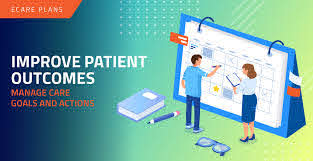5 Hot Spots and the Questions YOU Should Be Asking Your System Vendors Today (Part I)
- By
- Harvey Brofman
I got an email the other day and it struck me that the theme and questions were similar for pharmacy and other healthcare providers as well. In many ways, it resonates with the way I’ve conditioned my teams to think about systems over the last 30 years. So, I sat down with Point of Care Systems Director of Customer Experience to talk about these important questions. Greg and my thoughts follow.
Vital Statistics
Vital Statistics are fundamental, high level considerations for the systems without which you cannot run your business. Vendors, especially those serving healthcare, have so much to consider today. Design, data in tegrity, security, and workflow are all important. But the underlying operating system and database security is often taken for granted. Many systems are running today with operating systems and database servers close to, if not past their End-of-Life. This means the vendor (many times, Microsoft) no longer supports or makes changes to the underlying software. So, a few key questions you should be asking are:
tegrity, security, and workflow are all important. But the underlying operating system and database security is often taken for granted. Many systems are running today with operating systems and database servers close to, if not past their End-of-Life. This means the vendor (many times, Microsoft) no longer supports or makes changes to the underlying software. So, a few key questions you should be asking are:
- How maintainable is the system?
- Was it developed using a modern language?
- Is it of a modern architecture, considering modern security requirements?
- Is it designed for modern operating systems and databases?
- Does it run fast enough to keep up?
- When was it last updated? When was the update before that?
- How reliable is it and what is the unexpected downtime when running into an issue?
The answers to these questions may highlight security risks that can be a dangerous side effect of the choices made, HIPAA security risks may be as well – putting your business at risk. Make sure your vendor is developing for the latest supported platforms. You can read The inherent dangers of End-Of-Life Software for more insight.
Development Efficiency
 Development Efficiency relates to the level of performance of the development team. What percent of the budget is spent on maintenance and support vs. system enhancement? How adequately are updates tested? Do software developers collaborate or work in silos? How up-to-date are their programming skills? What is the rate of development throughput? Lots of questions, perhaps. But, the answers are quite informative.
Development Efficiency relates to the level of performance of the development team. What percent of the budget is spent on maintenance and support vs. system enhancement? How adequately are updates tested? Do software developers collaborate or work in silos? How up-to-date are their programming skills? What is the rate of development throughput? Lots of questions, perhaps. But, the answers are quite informative.
In the startup eco-system, Lean means creating more value for customers with fewer resources. A lean organization understands customer value and focuses its key processes to continuously increase it. One of the key efficiency drivers for these companies comes from their use of an Agile, rather than Waterfall development process.
Waterfall is the traditional form of software development. There are multiple distinct stages of software development, each finishing before the next one can begin. There is also typically a stage gate between. It’s not generally iterative, and comes with long release cycles.
Agile is an iterative, team-based approach to development. This approach emphasizes the rapid delivery of an application in complete functional components. Rather than creating tasks and schedules, development is done in phases called “sprints.” Each sprint has a defined duration (usually in weeks) with a running list of deliverables, planned at the start of the sprint. These are prioritized by business value as determined by the customer. If all planned work for the sprint cannot be completed, work is re-prioritized and used in future sprint planning. This generally comes with short release cycles.
the rapid delivery of an application in complete functional components. Rather than creating tasks and schedules, development is done in phases called “sprints.” Each sprint has a defined duration (usually in weeks) with a running list of deliverables, planned at the start of the sprint. These are prioritized by business value as determined by the customer. If all planned work for the sprint cannot be completed, work is re-prioritized and used in future sprint planning. This generally comes with short release cycles.
That’s a pretty good start, perhaps enough to think about for now.
Click here for more (Security, Future Readiness, Final Thoughts) in Part II




